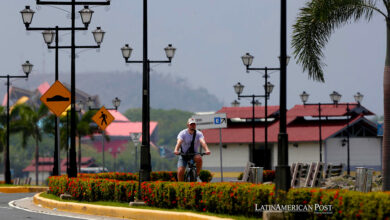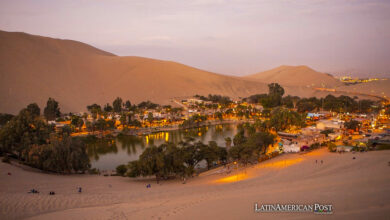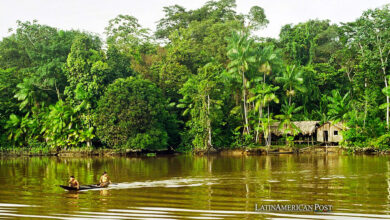Ecosystem Services: What Are They And Why Those on the Dominican-Haitian Border Are so Important?
Dominican-Haitian border ecosystem captures more than 260,000 tons of carbon per year. This is just one of the ecosystem services of this area. Here we tell you what they are and why they should be preserved .

Photo: Dominican-Haitian border
EFE
Listen to this article
Leer en español: Servicios ecosistémicos: Qué son y por qué son tan importantes los de la frontera domínico-haitiana
The natural ecosystems of the Dominican provinces bordering Haiti capture more than 260,000 metric tons of carbon per year , according to data published this Friday by the Ministry of Economy, Planning and Development (Mepyd).
The publication cites, for example, the province of Montecristi, where approximately 163,224 metric tons of carbon are captured per year, while in Pedernales the figure reaches 98,876.
The data is part of the "Border Monitor" report, the new edition of which estimates the carbon capture capacity of the area's ecosystem services, as a way of accentuating the importance of conserving these resources in the territory.
Read also: Blockchain: Revolutionizing Nature Conservation
Ecosystem services: how does nature take care of us?
Ecosystem or environmental services are understood to be those that nature or ecological processes provide to living beings and the planet and are of four types: supply, regulation, support and cultural.
This diagnosis "highlights the importance of native forests, such as coastal, marine and tropical forests, for reducing emissions by acting as carbon sinks through the capture of greenhouse gases, such as CO2, during photosynthesis and carbon storage, such as biomass" , indicates the analysis, prepared by the Directorate of Border Zone Development Policies.
The case of the border zone
The document points out that the border area presents a particular wealth, given that it concentrates an important proportion of the country's available ecosystem services .
These resources, particularly corals, seagrass and mangroves, are vital to responding to this problem, he points out.
One of the most important regulating ecosystem services for the environment is carbon sequestration , which refers to the ability of ecosystems to absorb carbon dioxide from the atmosphere and store it in their biomass and soil, the report highlights.
The document points out that the country has approximately 19,000 hectares of mangroves, of which 43.4% are in the border area, with Montecristi (north) being the province with the most hectares of mangroves in the country.
Specifically, it points out that 19.6% of the country's corals are found in the border area , with approximately 7,000 hectares, with Pedernales (south) being the one that has the largest number of hectares of corals in the area (57.5 %).
At the same time, it stands out that this territory concentrates 38.4% of the total seagrass at the national level, with a greater presence in Montecristi (60.8% of the total area and 23.4% of the total country).
The report highlights the need to preserve these ecosystems for future generations.




